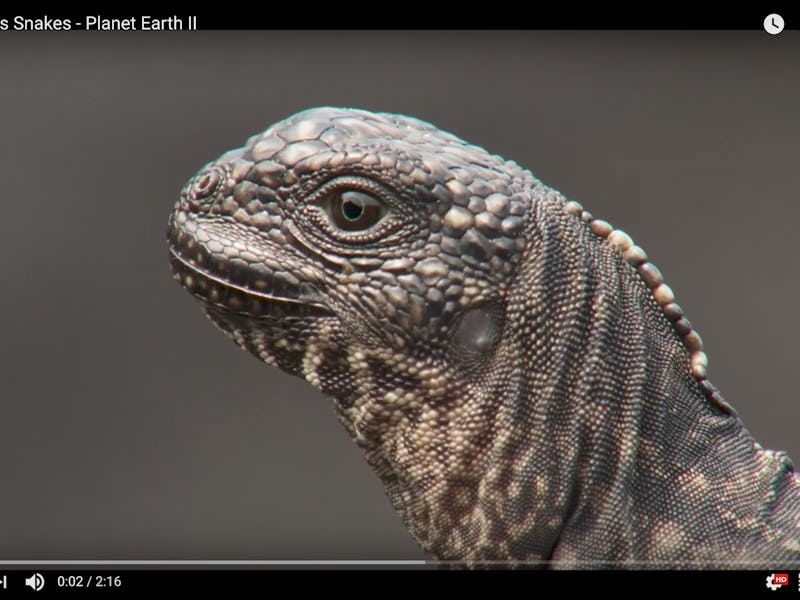Devastating Truth About Epic 'Planet Earth' Iguana Chase Revealed

You know the breathtakingly beautiful footage from nature documentaries that seems almost too good to be true? Well, guess what? In a revelation that, for many people, will seem more devastating than the combined effect of finding out the Tooth Fairy, Easter Bunny, and Santa Claus were all made up, a producer for Planet Earth II revealed that the thrilling viral iguana chase scene, in which a lone marine iguana hatchling narrowly escapes a swarm of hungry snakes, was actually spliced together from footage of multiple iguanas.
Take a moment if you need it.
This paradigm-shattering news came to light on Tuesday at the Media Production Show in London. Elizabeth White, the producer behind the “Islands” episode of the nature documentary’s second season, shattered the illusions of all in attendance when she explained that the famous scene, which had won the 2017 BAFTA Award for TV’s Must-See Moment, didn’t actually reflect the raw, unedited drama of nature.
“Unfortunately lizards, snakes and iguanas aren’t good at ‘takes,’” said White, according to Daily Mail.
The way the 2-minute sequence was edited certainly led viewers to believe that it depicted a single iguana. Take a look here:
Now, if this feels like a betrayal, you might want to brace yourself — this is not a new thing.
Nature documentaries have a long history of subtle deception, mostly in the form of sound. As explained on the podcast 99% Invisible, nature documentaries use the talents of foley artists to fill in the sounds that nature photographers are too far away to capture. To some people, this may sound like even more of a betrayal than some spliced footage, but if you think about it, it’s simply impossible to capture animal audio in the wild. Even the best microphones couldn’t isolate the target sound from all the noise across the necessary distance. Besides, can you imagine a boom mic operator sticking recording equipment between two ibexes while they fight?
The iguana chase scandal isn’t the first time the BBC has been called out for faking its portrayal of nature. As reported by Daily Mail in 2012, fans got upset about “controlled filming” in a BBC nature documentary in which captive animals were portrayed as wild animals, including a polar bear giving birth.
In that case, as in the most recent one, there was no conspiracy to deceive the viewer.
“What’s important to us is to be able to share great moments of animal nature, and some controlled filming allows us to do that,” said series producer James Honeybourne of the decision to be more transparent in the future. “We know that the audience wants to know, and we don’t have a problem with it. We’re not embarrassed about it, we’re absolutely proud of it.”
While the BBC may be honest about its filmmaking tricks, some critics claim that it is not as forthcoming about its lack of scientific accuracy. Specifically, in 2016, science reporter Ed Yong wrote in National Geographic that the BBC’s depiction of African hunting dogs in Planet Earth’s first season portrayed the animals’ habits incorrectly. Yong contests that the BBC’s depiction, in which the dogs hunt as a coordinated unit, pursuing prey relentlessly over long distances with a high rate of success, is not backed up by scientific evidence.
“The data revealed that the dogs chased almost all of their prey over short runs rather than long pursuits,” wrote Yong. “They didn’t coordinate their attacks, and they never showed signs of teamwork. On average, they killed just 16 percent of their targets.”
So, has the BBC betrayed its viewers? Maybe, but not in the ways that people are so angry about.